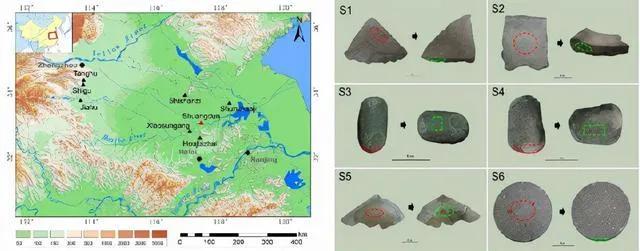Food processing is an important factor in the evolution of human civilization. Studies have pointed out that starch-rich foods have promoted the evolution of the brains of human ancestors, thus evolving modern humans alone, especially after humans learn to make different cooking tools and understand the cooking methods of food, the nutrients in starch become easier to digest and absorb, and the rate of evolution has become relatively faster. Therefore, an important part of archaeological research is the study of the evolution of prehistoric human food processing.
As early as the late Paleolithic period 28,000 years ago, early humans in the middle reaches of the Yellow River on the mainland had begun to use irregular stone grinding tools, and the use of tools developed to the peak in the Pei Ligang cultural stage dating back to 9,000-7,000 years ago, forming a well-formed and well-made grinding rod combination tool. However, entering the Yangshao culture period 7,000 years later, that is, the late Neolithic period, these tools quickly disappeared... Some archaeologists speculate that as the proportion of crops, such as rice, in human recipe structures rose rapidly, millstone grinding rods were gradually replaced by more efficient pestle-type shelling tools, so they withdrew from the historical stage. Previously they didn't have direct evidence to prove this, but with the addition of technological archaeology, it's different!

The Shuangdun site in Bengbu, Anhui Province, is a representative site of the transitional stage of the middle and late Neolithic period in the middle reaches of the Huai River, and archaeological excavators have found two types of stone processing tools at the same time, grinding rod and pestle mortar, which shows that people's use of these two tools was also in transition at that time. Therefore, the team and collaborators of Professor Yang Yuzhang of the Department of Science and Technology History and Archaeology of the University of Science and Technology of China first extracted the remnants of ancient starch grains on the surface of the stone tools excavated from the site, and determined that they belonged to different plant species such as wheat family, rice, coix, lotus root, and cowpea. Then the damage characteristics of these starch grains were analyzed, such as making a simple and rough stone grinding disc, because the grinding function is almost equal to nothing, so the starch grains attached to it are only "slight injuries", but the starch grains under the pestle mortar tool are relatively "seriously injured", and the researchers only found the starch grains of crop rice on the surface of the pestle mortar samples, which directly proves that the archaeologists' previous speculations are correct. Recently, the relevant results have been published online in "Archaeological Discontinuity", which has once again improved the evolutionary history of food processing tools of the prehistoric ancestors on the mainland.
Looking back at the evolutionary history of human beings, it took nearly 4 million years to evolve from ancient apes to Homo sapiens and Homo erectus, but it took less than 1 million years to evolve into Homo sapiens, and this acceleration is partly due to the behind-the-scenes heroes of food processing tools, of course, thanks to our own human beings, we absorbed nutrients in food, formed a developed brain, and then created these tools